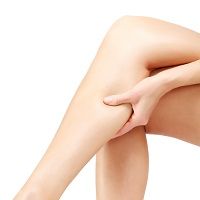Article
Does Proper Placement of a TENS Device Impact Pain Threshold?
Author(s):
A recent study in the Journal of Pain Research found that placing an electrical stimulation device properly doesn't necessarily increase the pain threshold for health patients subjected to transcutaneous electrical nerve stimulation (TENS). The finding is important because TENS is among many nonpharmacological interventions for pain around which clinical opinion on effectiveness is split.

A recent study in the Journal of Pain Research found that placing an electrical stimulation device properly doesn’t necessarily increase the pain threshold for health patients subjected to transcutaneous electrical nerve stimulation (TENS). The finding is important because TENS is among many nonpharmacological interventions for pain around which clinical opinion on effectiveness is split.
TENS is a therapy that uses low-voltage electrical current to relieve pain, using electrodes from a machine to areas of the skin, typically at a pressure point. Some earlier studies have shown that TENS can be effective for certain pain patients, but others showed insignificant impact on pain. The authors of the most recent study hypothesized that perhaps improper placement of the TENS device led to decreased analgesic effect.
To test this hypothesis, the researchers used TENS in two separate experiments. Experiment 1 measured skin impedance in the forearm at what was termed “optimal site selection” (OSS) and at “sham site selection” (SSS). Experiment 2 was a crossover design, double-blind randomized controlled trial comparing OSS-TENS, SSS-TENS, and placebo TENS (P-TENS) to confirm differences in skin imped­ance between OSS and SSS, and measure change in pressure pain threshold (PPT) following a 30-minute TENS treatment.
Ten healthy volunteers participated in Experiment 1, and 24 health patients participated in Experiment 2. TENS was applied for 30 minutes at 100 Hz frequency, 100 μs pulse duration, and “strong but nonpainful” amplitude. The results from both experiments confirm of Experiment 1 confirm higher skin impedance at SSS sites over optimal sites, but pressure pain threshold was no different for active and control groups. Importantly, neither experiment featured patients suffering from acute or chronic pain; this is an avenue the study authors would like to see pursued in the future.
“TENS deliv­ered over OSS was not more effective than TENS delivered over SSS, suggesting that skin impedance is not a factor in effectiveness of TENS when applied at strong but comfort­able intensities,” the authors noted. “The inferences made from this study can be applied only to the use of TENS in the forearm of healthy subjects without a painful condition. When considering the electrode location and intensities utilized, the volume of tissue in the forearm conducting the electrical charge would be smaller than the instance where electrodes are placed to treat many common clinical conditions.”





